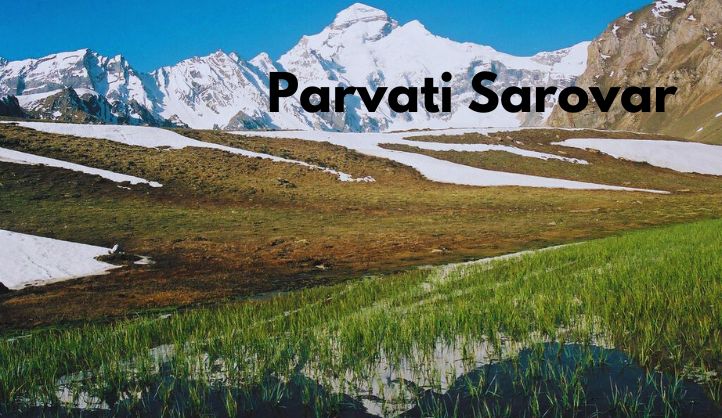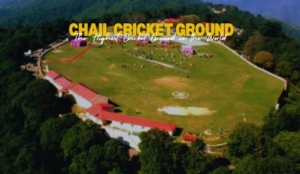Nestled amidst the serene and picturesque landscapes of the Himalayas, Parvati Sarovar is a pristine lake that has captivated the hearts of nature lovers, pilgrims, and adventurers alike. Known for its crystal-clear waters and breathtaking surroundings, this hidden gem offers a perfect blend of natural beauty, spiritual significance, and tranquil solitude. This article delves into the enchanting allure of Parvati Sarovar, exploring its location, history, legends, flora and fauna, and the experiences it offers to visitors.
Historical and Mythological Significance
Parvati Sarovar holds immense historical and mythological significance, deeply rooted in Hindu traditions and folklore. The lake is named after Goddess Parvati, the consort of Lord Shiva. According to legend, it is believed that Goddess Parvati meditated by this lake to seek the blessings of Lord Shiva. The serene environment of the lake provided the perfect setting for her penance.
The Legend of Parvati Sarovar
One of the most popular legends associated with Parvati Sarovar is the story of Goddess Parvati’s penance. It is said that Goddess Parvati undertook severe austerities by the lake to please Lord Shiva and attain his companionship. Impressed by her devotion, Lord Shiva appeared before her and granted her the boon of eternal companionship. This divine union is celebrated with great reverence, and Parvati Sarovar is considered a sacred spot for meditation and spiritual practices.
Location and Accessibility
Parvati Sarovar is situated in the Kumaon region of Uttarakhand, India. Perched at an altitude of approximately 4,300 meters (14,107 feet) above sea level, the lake is located in a remote area, making it a challenging yet rewarding destination for trekkers and adventurers. The journey to Parvati Sarovar typically begins from the town of Munsiyari, which serves as the base for the trek.
How to Reach Parvati Sarovar
1. By Air
The nearest airport to Munsiyari is Pantnagar Airport, located approximately 249 kilometers away. From Pantnagar, one can hire a taxi or take a bus to reach Munsiyari.
2. By Train
The nearest railway station to Munsiyari is Kathgodam, which is about 275 kilometers away. Regular trains connect Kathgodam to major cities like Delhi and Lucknow. From Kathgodam, taxis and buses are available to reach Munsiyari.
3. By Road
Munsiyari is well-connected by road to major cities in Uttarakhand. One can drive or take a bus from cities like Almora, Haldwani, and Pithoragarh to reach Munsiyari.
Trek to Parvati Sarovar
The trek to Parvati Sarovar is a challenging yet exhilarating journey that takes trekkers through dense forests, alpine meadows, and rugged terrains. The trek usually spans 6 to 7 days, with Munsiyari serving as the starting point. The route offers mesmerizing views of snow-capped peaks, lush green valleys, and cascading waterfalls, making the arduous journey worth every step.
Historical Mentions
Parvati Sarovar is also mentioned in ancient Hindu scriptures and texts. It is believed to be one of the Panch Sarovars, a group of five sacred lakes associated with Hindu mythology. The other four lakes in this group are Manasarovar, Gaurikund, Surajkund, and Chandratal. Each of these lakes holds a unique place in Hindu traditions and is considered a significant pilgrimage site.
Natural Beauty and Scenic Splendor
Parvati Sarovar is renowned for its pristine natural beauty and scenic splendor. The lake’s crystal-clear waters reflect the surrounding snow-clad peaks, creating a mesmerizing panorama that leaves visitors spellbound. The tranquility and serenity of the lake, coupled with the majestic Himalayan backdrop, make it a perfect destination for nature lovers and photographers.
Flora and Fauna
The region surrounding Parvati Sarovar is rich in biodiversity, with a variety of flora and fauna that add to its charm. The alpine meadows are adorned with vibrant wildflowers during the summer months, creating a colorful tapestry that contrasts beautifully with the azure waters of the lake.
Flora
The area around Parvati Sarovar is home to a diverse range of plant species, including rhododendrons, primulas, and blue poppies. The alpine meadows are carpeted with wildflowers, making it a paradise for botanists and nature enthusiasts. The lush greenery and colorful blooms create a stunning visual spectacle that enhances the overall beauty of the lake.
Fauna
The region is also a habitat for several species of wildlife, including the elusive snow leopard, Himalayan tahr, and musk deer. Birdwatchers can spot various avian species, such as the Himalayan monal, golden eagle, and snow pigeon. The presence of these animals and birds adds to the wilderness experience, making it an exciting destination for wildlife enthusiasts.
Experiences and Activities
Parvati Sarovar offers a range of experiences and activities for visitors, catering to different interests and preferences. Whether you are seeking spiritual solace, adventure, or simply a peaceful retreat, the lake has something to offer for everyone.
Spiritual Retreat
For those seeking spiritual solace and meditation, Parvati Sarovar provides an ideal setting. The serene environment and the mystical aura of the lake create a perfect ambiance for introspection and contemplation. Many pilgrims visit the lake to perform rituals and seek blessings, adding a spiritual dimension to their journey.
Trekking and Adventure
The trek to Parvati Sarovar is a thrilling adventure that attracts trekkers and adventurers from all over the world. The challenging terrain and high altitude make it a test of endurance and determination. However, the breathtaking views and the sense of accomplishment upon reaching the lake make it a rewarding experience.
Photography
Photography enthusiasts will find Parvati Sarovar to be a haven for capturing stunning landscapes and natural beauty. The reflections of the snow-capped peaks in the clear waters of the lake, the vibrant wildflowers, and the diverse wildlife offer countless opportunities for capturing memorable shots.
Camping
Camping by the shores of Parvati Sarovar is an unforgettable experience. The serene environment, coupled with the star-studded sky at night, creates a magical atmosphere. Camping allows visitors to immerse themselves in the natural beauty of the region and experience the wilderness up close.
Conservation Efforts
Given its remote location and ecological significance, efforts are being made to conserve and protect the pristine environment of Parvati Sarovar. Various organizations and local communities are working together to promote sustainable tourism practices and ensure that the natural beauty and biodiversity of the region are preserved for future generations.
Community Involvement
Local communities play a crucial role in the conservation of Parvati Sarovar. Community-based tourism initiatives provide economic opportunities for local residents while promoting sustainable practices. Involving the local population in conservation efforts ensures that they have a vested interest in protecting the natural heritage of the region.
Best Time to Visit
The best time to visit Parvati Sarovar is during the summer months, from June to September, when the weather is relatively mild and the trekking routes are accessible. During this period, the alpine meadows are in full bloom, and the lake is easily reachable. However, it is important to check the weather conditions and seek guidance from local authorities before planning the trip, as the region is prone to sudden weather changes.
Nearby Places to Explore
While Parvati Sarovar itself is a captivating destination, the surrounding region of Uttarakhand is rich with other beautiful and culturally significant places. Here are some nearby attractions you should consider exploring:
1. Munsiyari
Munsiyari, often referred to as the ‘Little Kashmir’ of Uttarakhand, serves as the base for treks to Parvati Sarovar. This picturesque town offers stunning views of the Panchachuli peaks and is a haven for adventure enthusiasts and nature lovers.
- Places to Visit in Munsiyari:
- Khalia Top is a popular trekking destination offering panoramic views of the Himalayan peaks.
- Nanda Devi Temple is a revered temple dedicated to the goddess Nanda Devi, located in the heart of Munsiyari.
2. Milam Glacier
Milam Glacier is one of the largest glaciers in the Kumaon region and a must-visit for trekkers. The glacier trek offers breathtaking views of the surrounding peaks and a glimpse into the life of the local Bhotiya community.
- Highlights:
- Trekking through picturesque landscapes.
- Visiting the ancient village of Milam.
- Observing the unique flora and fauna of the region.
3. Ralam Glacier
Ralam Glacier is another significant glacier in the region, known for its scenic beauty and challenging trekking routes. The trek to Ralam Glacier takes you through dense forests, alpine meadows, and remote villages.
- Highlights:
- Stunning views of snow-capped peaks.
- Camping in serene locations.
- Exploring the traditional villages en route.
4. Panchachuli Base Camp
Panchachuli Base Camp is located at the foot of the Panchachuli peaks, a group of five snow-capped mountains. The trek to the base camp is a thrilling adventure, offering spectacular views of the peaks and the surrounding valleys.
- Highlights:
- Trekking through picturesque landscapes and dense forests.
- Experiencing the unique culture of the Darma Valley.
- Camping at the base camp with a backdrop of the majestic Panchachuli peaks.
5. Thamri Kund
Thamri Kund is a small, serene lake located near Munsiyari. Surrounded by dense forests, the lake is known for its tranquil ambiance and stunning views of the Panchachuli peaks. It is an ideal spot for a short trek and a peaceful retreat.
- Highlights:
- Trekking through lush green forests.
- Spotting various species of birds and wildlife.
- Enjoying the peaceful surroundings and scenic beauty.
6. Narayan Ashram
Narayan Ashram is a spiritual retreat located in the Pithoragarh district. Founded by Narayan Swami in 1936, the ashram is a place of peace and tranquility, offering meditation and spiritual practices amidst the serene Himalayan landscape.
- Highlights:
- Engaging in meditation and spiritual practices.
- Exploring the ashram’s beautiful gardens and surroundings.
- Learning about the teachings and philosophy of Narayan Swami.
7. Dharchula
Dharchula is a picturesque town located on the banks of the Kali River, near the Indo-Nepal border. It serves as a gateway to several trekking routes and pilgrimage sites in the region.
- Places to Visit in Dharchula:
- Om Parvat is a sacred mountain known for the natural ‘Om’ symbol formed by the snow.
- Adi Kailash is also known as Chota Kailash, a revered pilgrimage site.
- Jauljibi is a scenic village located at the confluence of the Kali and Gori Rivers.
8. Pithoragarh
Pithoragarh, often referred to as the ‘Mini Kashmir of India,’ is a beautiful town surrounded by lofty mountains and lush green valleys. It offers a perfect blend of natural beauty, historical sites, and cultural heritage.
- Places to Visit in Pithoragarh:
- Pithoragarh Fort is a historical fort offering panoramic views of the town and surrounding valleys.
- Kapileshwar Mahadev Temple is a cave temple dedicated to Lord Shiva, located on the outskirts of Pithoragarh.
- Askot Wildlife Sanctuary is a sanctuary known for its diverse flora and fauna, including the endangered musk deer.
9. Jauljibi
Jauljibi is a picturesque village located at the confluence of the Kali and Gori Rivers. It is famous for its annual fair, which attracts traders and visitors from India and Nepal. The village offers beautiful views of the surrounding hills and rivers.
- Highlights:
- Exploring the vibrant Jauljibi Fair.
- Enjoying scenic views and tranquil surroundings.
- Visiting the nearby villages and interacting with the local communities.
10. Chaukori
Chaukori is a small hill station known for its tea gardens and panoramic views of the Himalayan peaks. It is an ideal destination for those seeking peace and tranquility amidst nature.
- Places to Visit in Chaukori:
- Berinag is a nearby town known for its ancient temples and tea gardens.
- Dharamghar is a scenic spot offering stunning views of the Nanda Devi and Panchachuli peaks.
- Nagmandir is an ancient temple dedicated to Lord Shiva, located on the outskirts of Chaukori.
Conclusion
Parvati Sarovar is a hidden gem in the Himalayas that offers a unique blend of natural beauty, spiritual significance, and adventure. The pristine lake, surrounded by majestic peaks and vibrant meadows, provides a serene and tranquil retreat for nature lovers, pilgrims, and adventurers. The challenging trek to the lake, coupled with the breathtaking scenery and diverse wildlife, makes it a rewarding experience for those who seek to explore the unspoiled wilderness of the Himalayas.
Whether you are seeking spiritual solace, an adventurous trek, or simply a peaceful escape from the hustle and bustle of city life, Parvati Sarovar has something to offer for everyone. By promoting responsible tourism and involving local communities in conservation efforts, we can ensure that this pristine natural wonder remains preserved for future generations to enjoy.
FAQs About Parvati Sarovar
1. What is Parvati Sarovar?
Parvati Sarovar is a pristine high-altitude lake situated in the Kumaon region of Uttarakhand, India. Known for its crystal-clear waters and serene surroundings, the lake holds significant spiritual and mythological importance and is a popular destination for trekkers and nature enthusiasts.
2. Where is Parvati Sarovar located?
Parvati Sarovar is located at an altitude of approximately 4,300 meters (14,107 feet) above sea level in the Kumaon region of Uttarakhand, India. The nearest town is Munsiyari, which serves as the base for the trek to the lake.
3. How can I reach Parvati Sarovar?
To reach Parvati Sarovar, you must first travel to Munsiyari. From Munsiyari, the lake is accessible via a challenging trek that typically spans 6 to 7 days. Here’s how you can reach Munsiyari:
- By Air: The nearest airport is Pantnagar Airport, about 249 km from Munsiyari.
- By Train: The nearest railway station is Kathgodam, approximately 275 km from Munsiyari.
- By Road: Munsiyari is well-connected by road to major cities in Uttarakhand.
4. What is the best time to visit Parvati Sarovar?
The best time to visit Parvati Sarovar is during the summer months, from June to September, when the weather is relatively mild, and the trekking routes are accessible. During this period, the alpine meadows are in full bloom, and the lake is easily reachable.
5. Is the trek to Parvati Sarovar difficult?
Yes, the trek to Parvati Sarovar is considered challenging due to the high altitude and rugged terrain. It requires good physical fitness and endurance. Trekkers should be prepared for steep climbs, rocky paths, and variable weather conditions.
6. Are there any accommodations available near Parvati Sarovar?
There are no permanent accommodations near Parvati Sarovar due to its remote location. Trekkers typically camp by the lake or at designated camping sites along the trekking route. It is advisable to carry your own camping gear and supplies.





